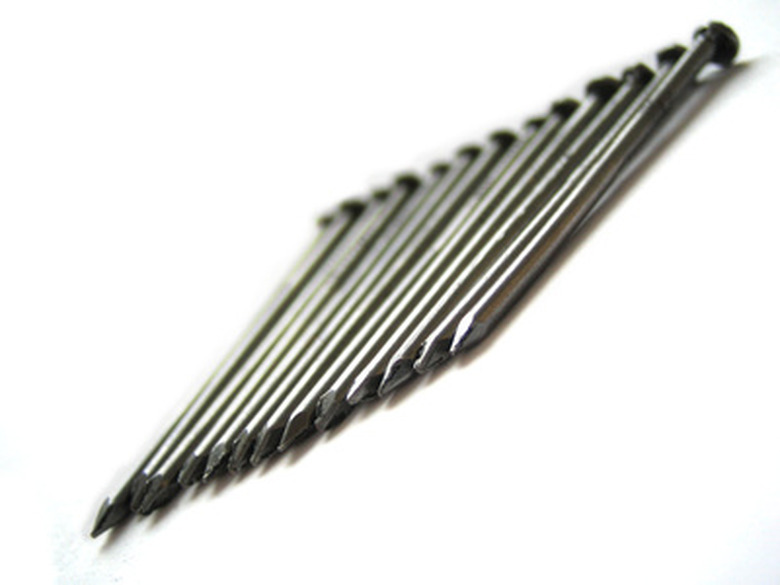How To Make An Electromagnet From A 9V Battery
An electromagnet typically comprises a metal core (usually iron) wrapped in a current-carrying wire. The electrical current in the wire arranges the electrons in the iron core in a way that increases the strength of the core's intrinsic magnetic field. The do-it-yourself assembly of an electromagnet is a common science experiment that demonstrates the marriage of electricity and magnetism as a unified force. You can use any type of battery for this project, including a 9-volt (9V) battery.
Step 1
Measure and cut a piece of insulated wire that is about four times the length of the nail. Use the wire stripper to remove about half an inch of plastic insulation from each end of this wire.
Step 2
Wrap the wire around the nail for as many adjacent turns as the length will allow. Wrap it tightly, so that each loop of wire touches the next. Leave enough wire on each end to ensure that you will be able to splice the ends of the wire to the stripped ends of the wires from the 9V battery connector clip.
Step 3
Splice each end of the wrapped wire to one terminal of the 9V battery connector. Do this by twisting the stripped ends of each wire together with an exposed wire from the connector clip. (It doesn't matter which end connects to which.) Push the spliced wires into the splice cap. Secure the cap tightly by twisting it, or crimping it with a pair of pliers.
Step 4
Connect the battery to the battery connector clip. With all connections securely fastened, you now have your own, home-built electromagnet. Test the electromagnet by putting it near any other magnet or iron-based object to ensure that it works.
Things Needed
- Steel nail
- Insulated wire
- 9V battery
- 9V battery connector
- 2 splice caps for wire
- Wire cutter
- Wire stripper
Cite This Article
MLA
Small, Andi. "How To Make An Electromagnet From A 9V Battery" sciencing.com, https://www.sciencing.com/make-electromagnet-9v-battery-7689640/. 24 April 2017.
APA
Small, Andi. (2017, April 24). How To Make An Electromagnet From A 9V Battery. sciencing.com. Retrieved from https://www.sciencing.com/make-electromagnet-9v-battery-7689640/
Chicago
Small, Andi. How To Make An Electromagnet From A 9V Battery last modified August 30, 2022. https://www.sciencing.com/make-electromagnet-9v-battery-7689640/
